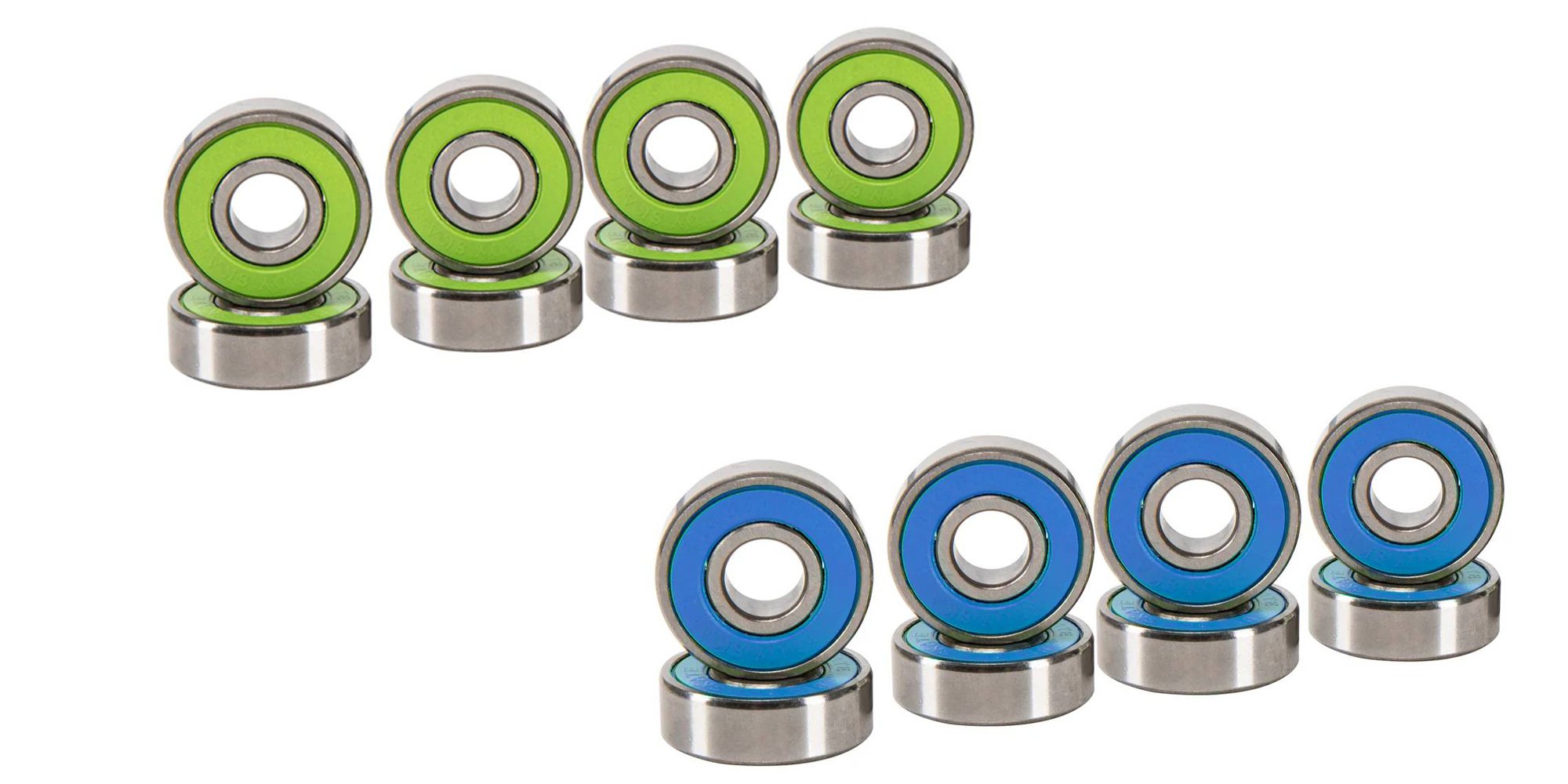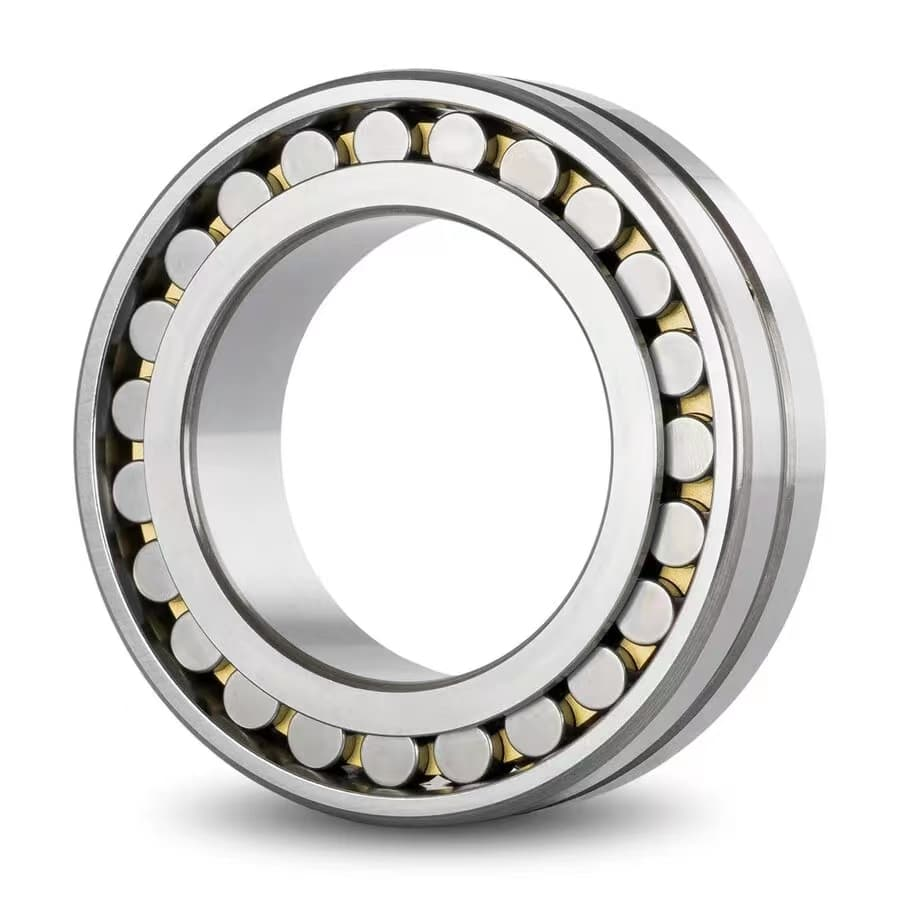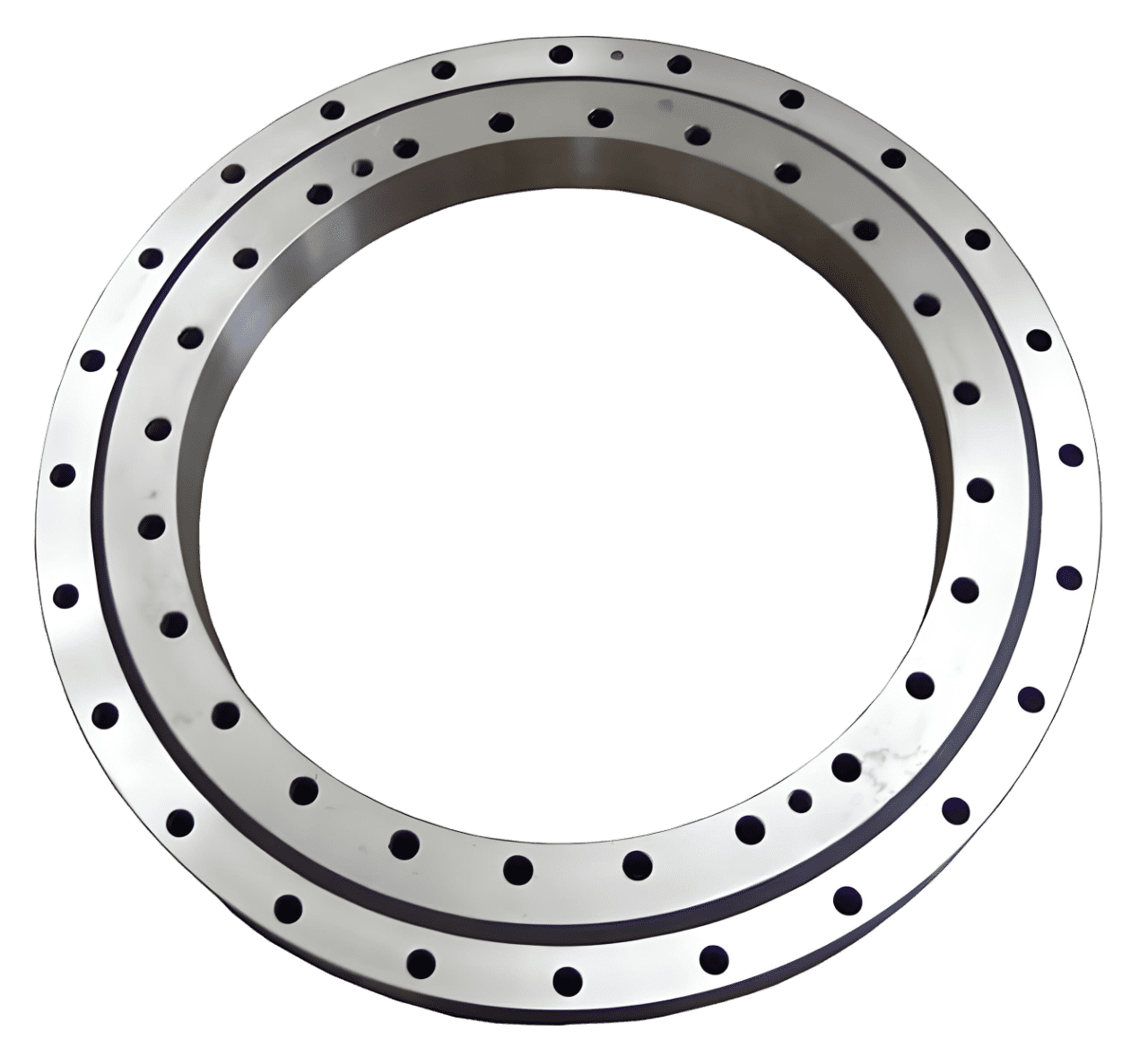Dental Bearings: Key Advantages
Dental bearings, though small, are vital in dental handpieces, crucial for effective and efficient procedures. These bearings offer significant...

ABEC 7 bearings are high-precision bearings designed to provide superior performance in applications requiring tight tolerances and high-speed operation.
The ABEC (Annular Bearing Engineers' Committee) scale rates bearings based on their accuracy, with higher numbers indicating more precise tolerances.
The goal of this blog is to explain what "ABEC 7" means and show how it applies in real-life situations.
The Annular Bearing Engineering Committee (ABEC) created a system to measure how precise bearings are.
They made a scale where higher numbers, like ABEC 7, mean the bearing is made with tighter, more accurate standards.
This helps people choose the right bearings for their needs, especially when they need high speed and smooth performance.
ABEC defines how precise ball bearings should be made.
The higher the ABEC number, like ABEC 7, the smaller the allowed size differences in the bearing's parts.
This means the bearing moves more smoothly and accurately, making it better for high-speed and high-performance use.
|
ABEC Rating |
Precision |
Tolerance |
Applications |
|
ABEC 1 |
Low |
Wide |
General machinery |
|
ABEC 3 |
Moderate |
Improved |
Applications requiring enhanced performance |
|
ABEC 5 |
Balanced |
Medium |
Bicycles, medium-speed industrial equipment |
|
ABEC 7 |
High |
Very tight |
High-speed, low-vibration applications |
|
ABEC 9 |
Ultra-high |
Extremely tight |
Scientific instruments, aerospace |

Tighter tolerances mean the parts of the bearing are made more accurately and with less variation in size.
This results in smoother, more reliable movement, especially at super high speeds.
The higher the ABEC class, the better the bearing performs under demanding conditions.
Runout refers to how much a bearing's parts wobble or shift when they spin. They should spin smoothly without wobbling.
If there’s runout, the bearing isn’t perfectly round, causing uneven movement. It can affect how well the bearing works, especially at high speeds.
Parallelism is about how well the two surfaces of the bearing (like the inner and outer rings) are aligned with each other.
If they are perfectly parallel, the bearing will work more smoothly. If the surfaces are not parallel, it can cause uneven wear or make the bearing less efficient.
The ISO system is used worldwide to set standards for bearing tolerances, similar to ABEC.
ISO tolerances are usually a bit wider than ABEC’s, but they still ensure high-quality performance.
ISO helps make sure bearings work well in all types of machinery, from low-speed to high-precision applications.
The DIN system is predominantly employed in Europe. Like ABEC and ISO, it defines the tolerances and precision levels of bearings.
DIN is known for its strict quality control and is often applied to high-performance industries.
ABEC is more common in the U.S., particularly in applications like skateboarding and machinery that require high-speed performance.
ISO and DIN are used worldwide, with ISO being global and DIN mostly in Europe.
While ABEC focuses on tighter tolerances for precise bearings, ISO and DIN cover a wider range of tolerances.
All three rating systems aim to ensure smooth and efficient performance for bearings in different industries.
ABEC 7 bearings are manufactured with highly precise components, resulting in minimal size variation. This helps the bearing move smoothly with less friction and wobble.
The tight tolerances are crucial for high-speed use because ABEC 7 bearings allow the bearing to spin faster and more efficiently.
This helps to minimize heat and vibrations. Because of this, ABEC 7 bearings are ideal for applications that require smooth, reliable, and fast performance. These include skateboarding, robotics, and aerospace.
Controlled runout means the bearing's parts, like the balls and races, are perfectly round and aligned. This reduces wobbling or uneven movement when the ABEC 7 bearing spins.
As a result, it can run smoothly at high speeds without causing vibrations or wear. Less runout means less stress on the parts, which helps the bearing last longer.
Minimal play refers to the small amount of movement between the parts of the bearing.
With ABEC 7 bearings, the play is kept to a minimum, ensuring that the parts stay in proper alignment during use.
This reduces unnecessary friction and wear, leading to a longer lifespan and better performance, even under high-speed conditions.
Here’s a table comparing Chrome Steel Bearings and Ceramic Bearings:
|
Feature |
Chrome Steel Bearings |
Ceramic Bearings |
|
Material |
High-carbon steel with chromium content |
Silicon Nitride (Si3N4) or Zirconia (ZrO2) |
|
Advantages |
Durable, cost-effective, widely used |
Low friction, high speed, corrosion-resistant, high-temperature resistant, wear-resistant |
|
Applications |
Automotive, industrial machinery, household appliances |
Aerospace, medical devices, robotics, high-end sports equipment (e.g., bicycles, skateboards) |
|
Friction |
Higher friction, suitable for medium to high-speed applications |
Lower friction, ideal for high-speed and precision applications |
|
Durability |
Durable, but prone to rust and corrosion in extreme conditions |
Corrosion-resistant, wear-resistant, suitable for harsh conditions and long-term use |
|
Weight |
Heavier than ceramic bearings |
Lighter, ideal for weight-sensitive applications |
|
Cost |
More affordable |
More expensive, suitable for high-performance applications |
|
Disadvantages |
Can generate more heat and friction at high speeds |
Expensive, can be brittle under heavy shock loads |
ABEC 7 skateboard bearings offer high precision, which ensures smooth and fast rides, even at higher speeds.
Their tight tolerances reduce friction and heat buildup, enhancing durability and longevity.
These bearings are ideal for skaters looking for reliable performance and speed, especially in competitive or high-performance settings.



ABEC 7 bearings are designed for high precision and high-speed applications.
However, they do not provide information about the bearing's load-bearing capacity.
Load capacity depends on factors like the bearing's size, materials, and design, which are separate from the ABEC rating.
When selecting a bearing, it’s important to consider the ABEC rating for precision and speed.
Additionally, you should also consider the bearing's load rating to ensure it meets the specific needs of the application.
Many people mistakenly believe that ABEC 7 or ABEC 9 bearings are always the best option. Higher ABEC ratings, such as ABEC 7 or ABEC 9, indicate high precision.
These bearings are suitable for high-speed applications. However, they may not always be the best choice for every situation. However, they are not always the best choice for every situation.
For high-speed, low-load applications like skateboarding or fishing reels, ABEC 7 or ABEC 9 bearings may be ideal. They provide smooth and precise performance at high speeds.
For heavy-duty or high-load applications, bearings with a lower ABEC rating are often a better choice.
Bearings such as ABEC 1 or ABEC 3 can handle higher loads and tougher conditions.
These bearings are designed to endure more stress, even though they may not be as precise or fast as ABEC 7 or ABEC 9.
They are more suitable for situations where precision is less critical than durability and strength.
|
ABEC |
ISO 492 |
DIN 620 |
JIS B1514 |
|
ABEC 1 |
normal |
P0 |
Class 0 |
|
ABEC 3 |
class 6 |
P6 |
Class 6 |
|
ABEC 5 |
class 5 |
P5 |
Class 5 |
|
ABEC 7 |
class 4 |
P4 |
Class 4 |
|
ABEC 9 |
class 2 |
P2 |
Class 2 |
ISO, DIN, and JIS are global standards that cover a wider range of bearing quality, performance, and tolerances.
These standards are used around the world and ensure consistent, high-quality bearings for many industries.
While ABEC is best for specific uses, the global standards make sure bearings meet the right needs in different markets.
| Criteria | Questions | ABEC 7 Suitable? |
| Speed Requirements | Does the application necessitate high-speed operation? | Yes (Good for high-speed) No (Consider lower ABEC ratings for slower applications) |
| Precision Needs | Is high precision crucial (e.g., medical devices, aerospace)? | Yes (Tight tolerances) No (Consider lower ABEC ratings for less precise tasks) |
| Load Requirements | Does the application require high load-bearing capabilities (e.g., industrial machinery)? | Yes (ABEC 7 is suited for moderate loads) No (Consider bearings designed for heavy load) |
| Environmental Conditions | Will the bearings be exposed to moisture, dirt, or chemicals? | Yes (ABEC 7 works well in controlled environments) No (Consider corrosion-resistant materials like ceramic or stainless steel) |
| Budget Consideration | Do you need to balance performance with cost? | Yes (ABEC 7 may be more expensive) No (High precision justifies the cost) |
| Application Type | Is your application highly sensitive to precision (e.g., robotics, aerospace, medical instruments)? | Yes (ABEC 7 ideal for precise applications) No (Other ABEC ratings like ABEC 5 or 3 may suffice) |
|
Criteria |
Ceramic Bearings |
Chrome Steel Bearings |
|
Durability & Wear Resistance |
Highly durable, wear-resistant, ideal for harsh environments |
Durable but less wear-resistant, especially in high-speed or high-load applications |
|
Corrosion Resistance |
Superior corrosion resistance, ideal for wet or chemical environments |
Less corrosion-resistant, unless treated with special coatings |
|
Weight |
Lighter, reduces system weight |
Heavier, affects overall system weight |
|
Speed & Friction |
Lower friction, ideal for high-speed operation |
Higher friction, limits speed and efficiency |
|
Heat Resistance |
Higher heat resistance, maintains performance at high temperatures |
Sensitive to heat, may deform at high temperatures |
|
Cost |
More expensive because of manufacturing complexity |
More affordable and cost-effective for general applications |
|
Applications |
High-speed, high-precision, harsh environments (e.g., aerospace, medical devices) |
General-purpose, low to medium speed, industrial machines |
Knowing ABEC ratings helps you pick the right bearings for your needs, as they show how precise and fast the bearings can perform.
If you're unsure which ABEC 7 bearings are right for you, don't hesitate to reach out to LILY BEARING for expert advice.

Dental bearings, though small, are vital in dental handpieces, crucial for effective and efficient procedures. These bearings offer significant...

Bearings are crucial components in machinery and vehicles, ensuring smooth operation and reducing friction between moving parts. Yet, when they...

For the sake of environmental protection, the electric vehicle industry has been growing rapidly in recent years. The electric vehicles in China...